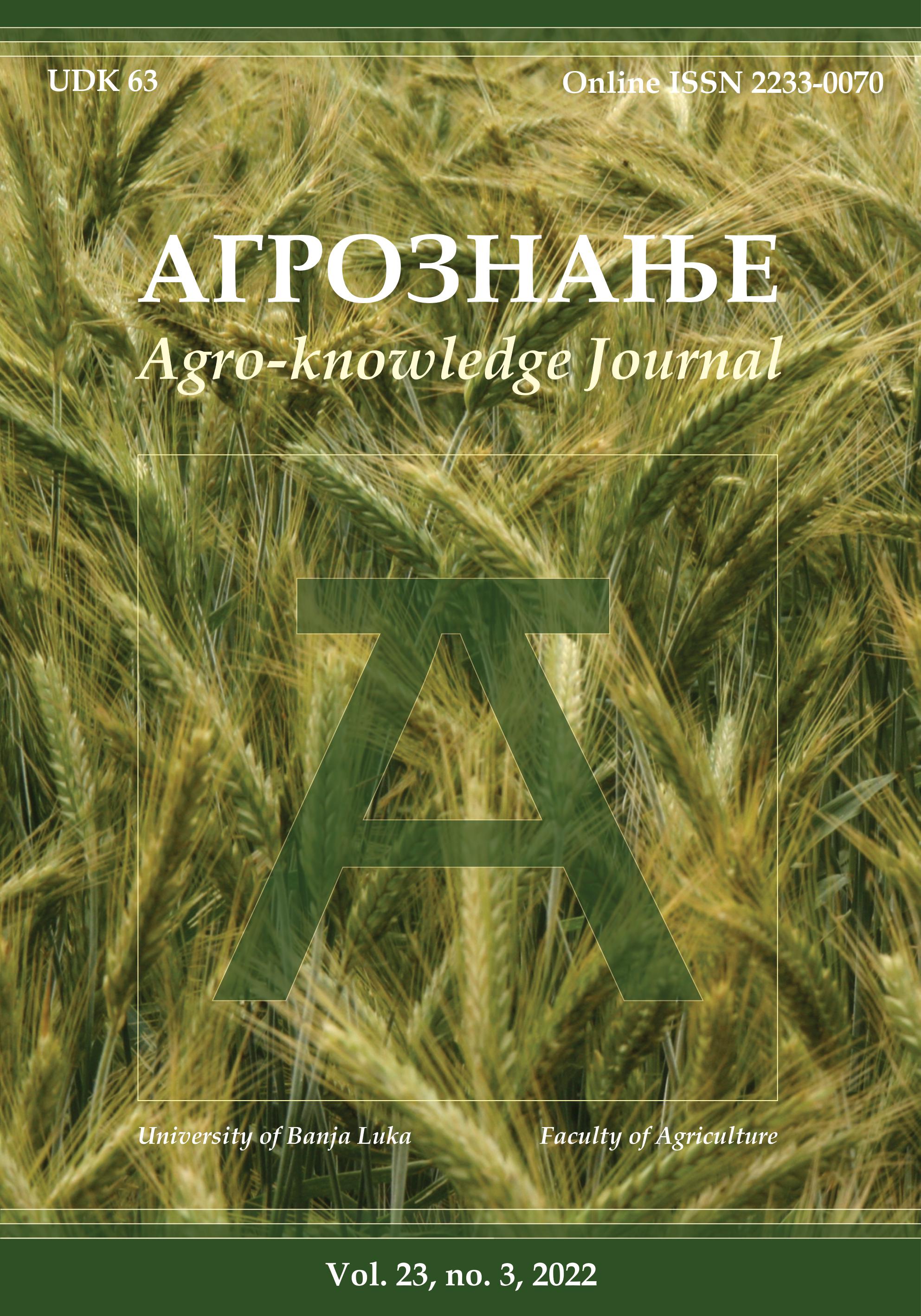Influence of zinc application on grain yield and leaf surface of different maize genotypes
Утицај примјене цинка на висину приноса зрна и површину лисне масе различитих генотипова кукуруза
DOI:
https://doi.org/10.7251/AGREN2203143CAbstract
Maize production is intensified with a larger amount of mineral fertilizers, which leads to a decrease in micronutrient reserves in the soil. As maize is grown in different regions, research aimed at achieving stable grain yields is very important in the era of climate change. The aim of this study was to determine the influence of zinc application on yield and leaf mass area of three maize genotypes. A three-factorial experiment was performed in the Mačva region. For plant nutrition, 160 kg ha-1 of nitrogen was provided (30 kg ha-1 in basic cultivation, 90 kg ha-1 in pre-sowing, and 40 kg ha-1 in top dressing). Factor A are the years of research in the 2016-2018 period. Factor B: three hybrids ZP 427, ZP 548, and ZP 684. Factor C are different treatments, i.e., Zn0 - control, Zn1 - ZnSO4 25 kg ha-1 was introduced into the soil before sowing, and Zn2 - seed treatment + foliar treatment. For seed treatment before sowing, 63 grains were immersed for 24 h in aqueous ZnSO4 solution (0.129 g and supplemented with 200 ml of water). Sowing was done in the first ten days of April. Foliar treatments were done in the phenophase of 5-7 leaves with 2 l ha-1 liquid fertilizer (7% Zn). The grain yield of hybrids was highly influenced by the year. Treatments and their interactions significantly increased grain yield p<0.05. Compared to the control, Zn1 increased grain yield by 14.56% and Zn2 by 14.17%. The ZP 684 hybrid had the highest average yield. Leaf surface was highly influenced by all examined variables and their interactions. In 2018, the leaf surface was on average 3.24% higher than in 2017. The ZP 684 hybrid had the largest leaf surface, 8.30% higher than the ZP 548 hybrid, and 25.10% higher than the ZP 427 hybrid.
Key words: corn, zinc, grain yield, leaf surface

